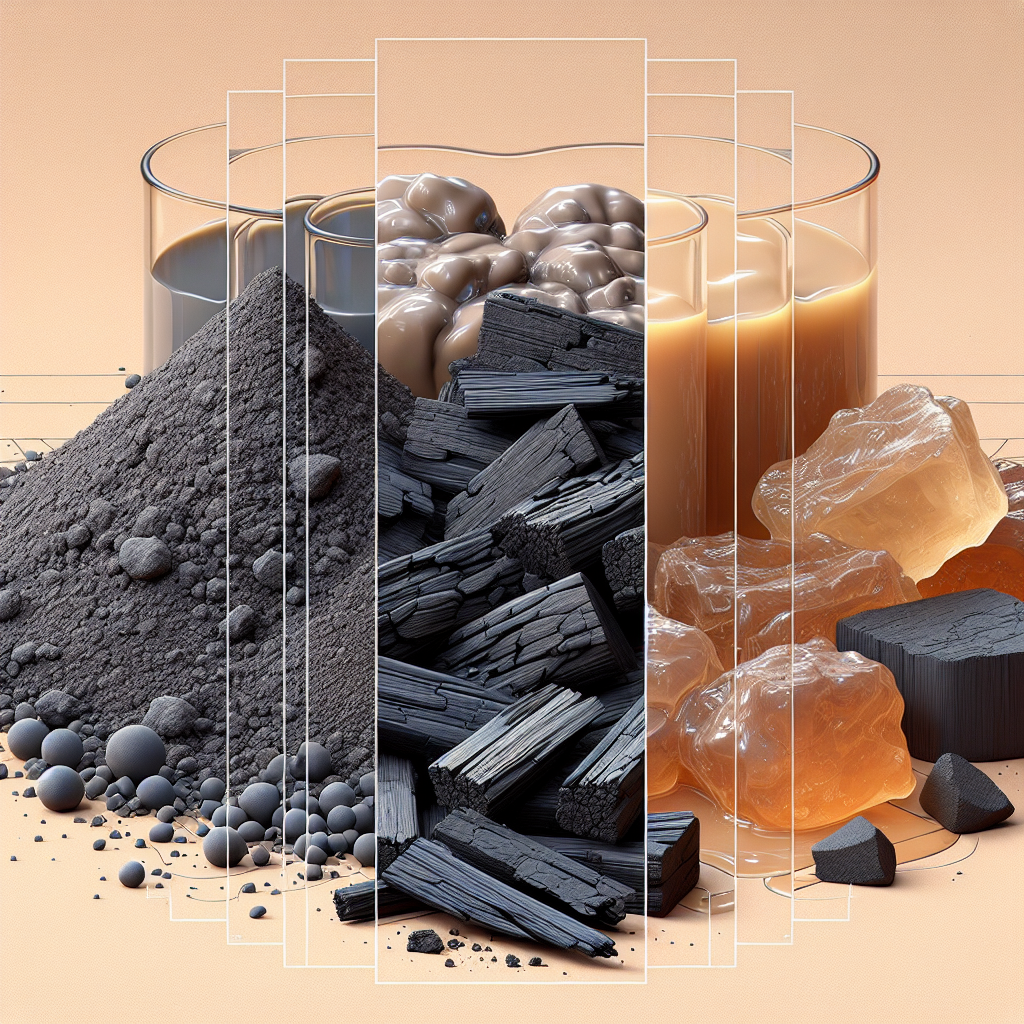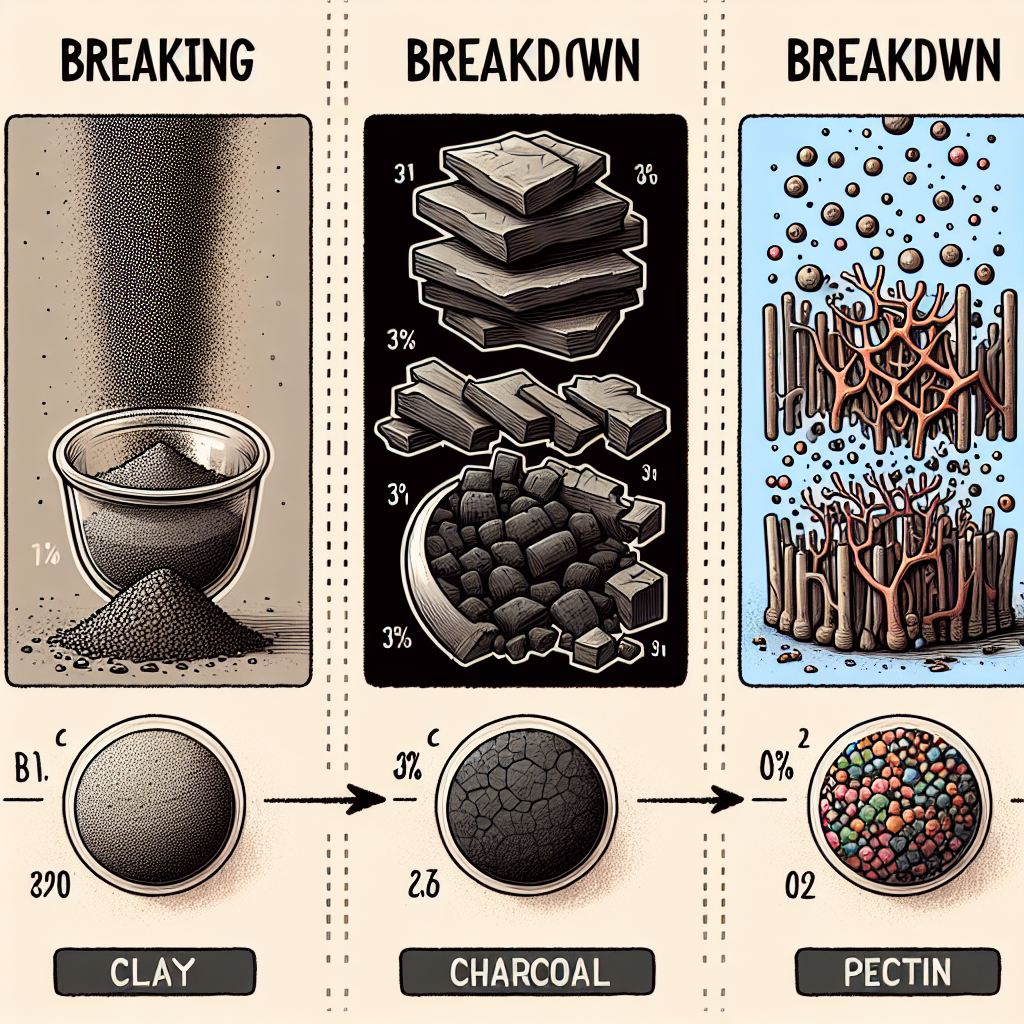Breaking Down Binders: Clay, Charcoal, and Pectin

Discover more about the fascinating world of binders such as clay, charcoal, and pectin and how they can impact your health. Learn how to break them down effectively for optimal health benefits. Visit My Vibrant Vitality now to start your journey towards a healthier lifestyle.
Understanding the Role of Clay, Charcoal, and Pectin in Breaking Down Binders
Binders are substances that play a crucial role in various industries, from pharmaceuticals to food production, and even in art. They help to hold or bind together different components, ensuring that the final product maintains its intended form and function. Among the most commonly used binders are clay, charcoal, and pectin. Each of these substances has unique properties that make them ideal for specific applications.
Clay, for instance, is a naturally occurring material composed primarily of fine-grained minerals. It is highly plastic when wet, allowing it to be easily molded into various shapes. Once dried, it becomes hard and retains its shape, making it an excellent binder. Clay is widely used in pottery and ceramics, where it binds together the various components of the ceramic material, ensuring that the final product is sturdy and durable.
In the pharmaceutical industry, clay is often used as a binder in tablet formulation. It helps to hold together the active ingredients and other excipients, ensuring that the tablet does not break apart during handling or storage. Moreover, certain types of clay, such as bentonite and kaolin, have adsorbent properties, meaning they can bind to and remove toxins from the body. This makes them useful in treating various gastrointestinal disorders.
Charcoal, on the other hand, is a form of carbon that is produced by heating wood or other organic materials in the absence of oxygen. It has a porous structure, which gives it a large surface area and makes it highly adsorbent. This property makes charcoal an effective binder in water and air purification systems, where it binds to and removes impurities.
Activated charcoal, a specially processed form of charcoal, is used in medicine to treat poisonings and overdoses. It works by binding to the toxic substances in the stomach, preventing them from being absorbed into the body. This binding action also makes activated charcoal useful in skincare products, where it can bind to and remove dirt, oil, and other impurities from the skin.
Pectin is a type of polysaccharide that is found in the cell walls of plants. It has the ability to form a gel when mixed with water, making it an effective binder. Pectin is widely used in the food industry, particularly in the production of jams and jellies. It binds to the fruit and sugar, creating a thick, spreadable consistency.
In the pharmaceutical industry, pectin is used as a binder in tablet formulation, similar to clay. It helps to hold together the active ingredients and other excipients, ensuring that the tablet maintains its shape and does not break apart. Pectin also has the added benefit of being a natural and edible substance, making it a safer alternative to synthetic binders.
In conclusion, clay, charcoal, and pectin each play a unique role in breaking down binders. Their unique properties make them ideal for specific applications, from pottery and ceramics to water purification, medicine, and food production. Understanding these roles not only provides insight into the diverse uses of these substances but also highlights the importance of binders in various industries.
The Science Behind Binders: A Deep Dive into Clay, Charcoal, and Pectin

Binders are a fascinating subject in the world of science, particularly in the fields of chemistry and biology. They are substances that can bind or attach themselves to certain particles, often to facilitate their removal from a system. This article will delve into the science behind three common types of binders: clay, charcoal, and pectin, and explore their unique properties and applications.
Clay, a naturally occurring material composed primarily of fine-grain minerals, is one of the oldest binders known to humanity. Its binding properties are attributed to its unique structure. Clay minerals are layered, with each layer composed of one sheet of silica and one sheet of alumina. These layers have a slight negative charge, which allows them to attract and bind with positively charged particles, such as toxins and heavy metals. This property is particularly useful in the field of environmental science, where clay is often used to remediate contaminated soil and water.
Transitioning to another type of binder, we find ourselves in the realm of activated charcoal. Unlike clay, activated charcoal is not naturally occurring but is produced by heating carbon-rich materials, such as wood, peat, or coconut shells, to very high temperatures. This process, known as activation, increases the charcoal’s surface area and creates a network of tiny pores. These pores act like traps for certain particles, a process known as adsorption. Activated charcoal is renowned for its ability to adsorb a wide range of substances, from gases and liquids to solids. This makes it an invaluable tool in many fields, including water purification, air filtration, and even medicine, where it is used to treat poisonings and overdoses.
Lastly, we turn our attention to pectin, a type of polysaccharide found in the cell walls of plants. Pectin is a binder that operates on a slightly different principle. It has the ability to form a gel when mixed with water and certain acids, a property that is exploited in the food industry to thicken jams and jellies. The gel-forming ability of pectin is due to its structure, which is composed of chains of sugar molecules. When pectin comes into contact with water and acid, these chains can link together, trapping water molecules and forming a gel. This gel can bind with various substances, including sugars and fruit juices, allowing them to be evenly distributed throughout a product.
In conclusion, binders such as clay, charcoal, and pectin are remarkable substances with a wide range of applications. Their binding properties, derived from their unique structures and chemical compositions, allow them to interact with various particles and facilitate their removal or distribution. Whether it’s clay remedying contaminated soil, activated charcoal purifying water, or pectin thickening your favorite jam, the science behind these binders is as fascinating as it is diverse. As we continue to explore and understand these substances, we can look forward to new applications and innovations in the future.
Exploring the Efficacy of Clay, Charcoal, and Pectin as Binders: A Comprehensive Analysis
Binders are substances that have the ability to bind, coagulate, or agglomerate particulate matter. They play a crucial role in various industries, including pharmaceuticals, food, and cosmetics. Among the myriad of binders available, clay, charcoal, and pectin have been gaining significant attention due to their unique properties and potential benefits. This article aims to provide a comprehensive analysis of these three binders, exploring their efficacy and potential applications.
Clay, a naturally occurring material composed primarily of fine-grain minerals, has been used as a binder for centuries. Its binding properties are attributed to its plate-like particles, which when mixed with water, slide over each other to form a plastic, moldable mass. This makes clay an excellent binder in industries such as ceramics and construction. Moreover, certain types of clay, like Bentonite, have been found to possess detoxifying properties, making them useful in the health and wellness industry. They work by binding to toxins in the body, which are then excreted, thereby promoting detoxification.
Transitioning to charcoal, it is a lightweight black carbon residue produced by strongly heating wood or other organic materials in the absence of oxygen. Activated charcoal, in particular, has been lauded for its potent binding properties. It has a large surface area due to its porous structure, which allows it to bind to a wide range of substances. This is why activated charcoal is often used in emergency situations to treat certain types of poisoning and overdose, as it can bind to the toxin and prevent its absorption into the body. Furthermore, it is used in water purification systems to remove impurities, thanks to its ability to bind to contaminants.
Lastly, pectin, a type of polysaccharide that occurs naturally in certain fruits, has also shown promise as a binder. It has the ability to form a gel when mixed with water, which is why it is commonly used as a thickening agent in food products like jams and jellies. However, its binding properties extend beyond the culinary world. In the pharmaceutical industry, pectin is used as a binder in tablet formulations, helping to improve the tablet’s hardness and reduce its friability. Additionally, due to its natural origin and biocompatibility, pectin is being explored as a binder in the development of eco-friendly packaging materials.
In conclusion, clay, charcoal, and pectin each offer unique binding properties that make them valuable in various industries. Clay, with its plasticity and detoxifying properties, is useful in industries ranging from construction to health and wellness. Charcoal, particularly in its activated form, is a powerful binder that can adsorb a wide range of substances, making it invaluable in emergency medicine and water purification. Pectin, with its gel-forming ability and biocompatibility, is a versatile binder used in food, pharmaceuticals, and potentially, eco-friendly packaging. As research continues, it is likely that new applications for these binders will continue to emerge, further underscoring their importance and versatility.